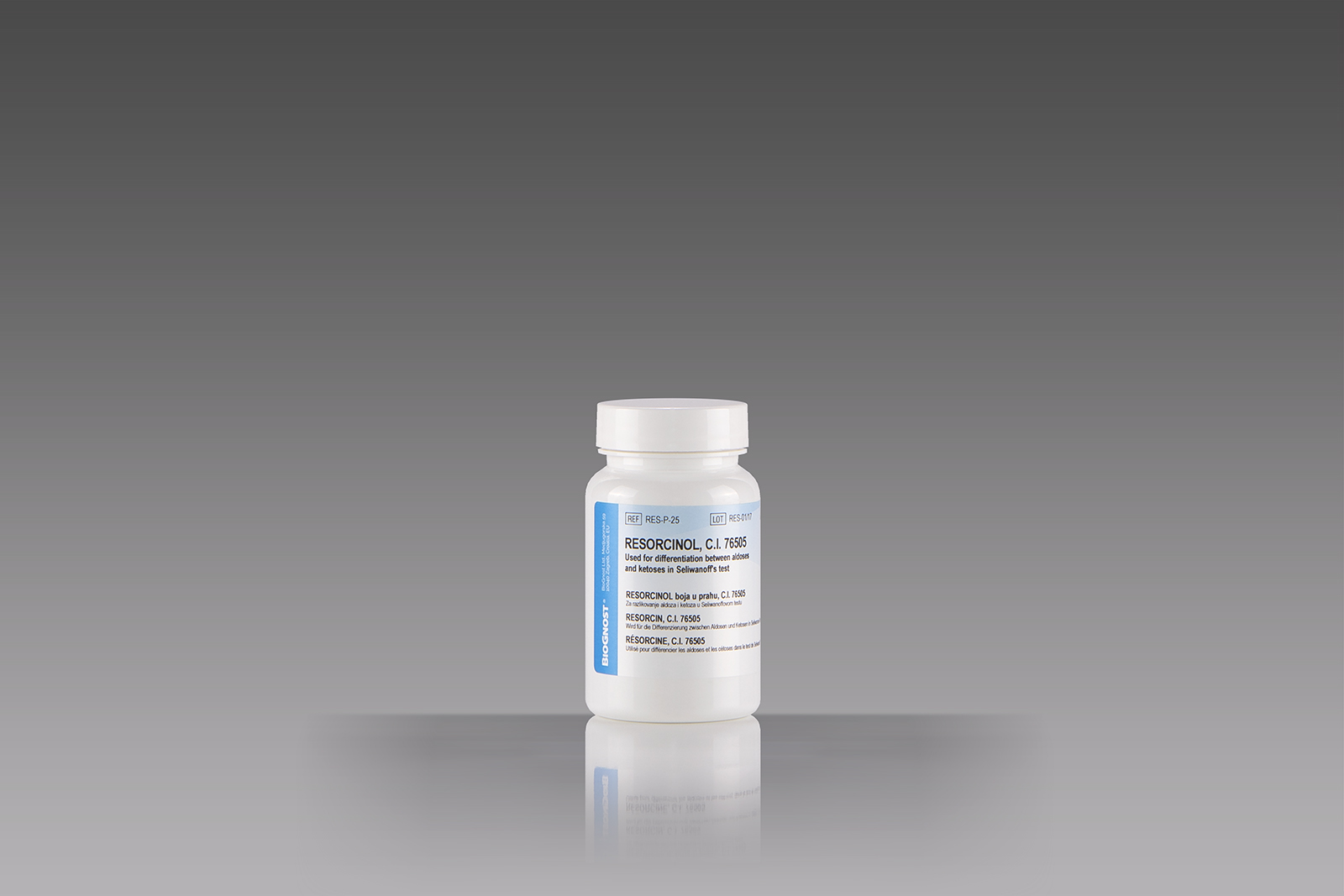Introduction
Resorcinol is an aromatic alcohol in the form of white crystals. It is primarily used as an antiseptic, but it is most commonly used in diagnostics. It is an important component of Seliwanoff’s test for differentiation between aldoses and ketoses. The test is conducted after the tested sample is mixed with Selliwanoff’s reagent (resorcinol in hydrochloric acid solution) and heated until the boiling point in a water bath. By changing the color of the reagent during heating it is possible to determine the presence of a particular sugar in the sample. Except for that method, resorcinol is also commonly used for histology staining for detecting elastic fibers in Weigert-Van Gieson methods. Elastic fibers consist of elastin polymers and elastic microfibrils that make up a 3D network in an extracellular matrix inside connective tissue (skin, elastic cartilage, vascular walls, lung tissue and in vocal cords). Unlike standard histology stains, Weigert van Gieson (known as a resorcin-fuchsin dye) displays selective differentiation of tissue samples, even in the early phase of the disease.


